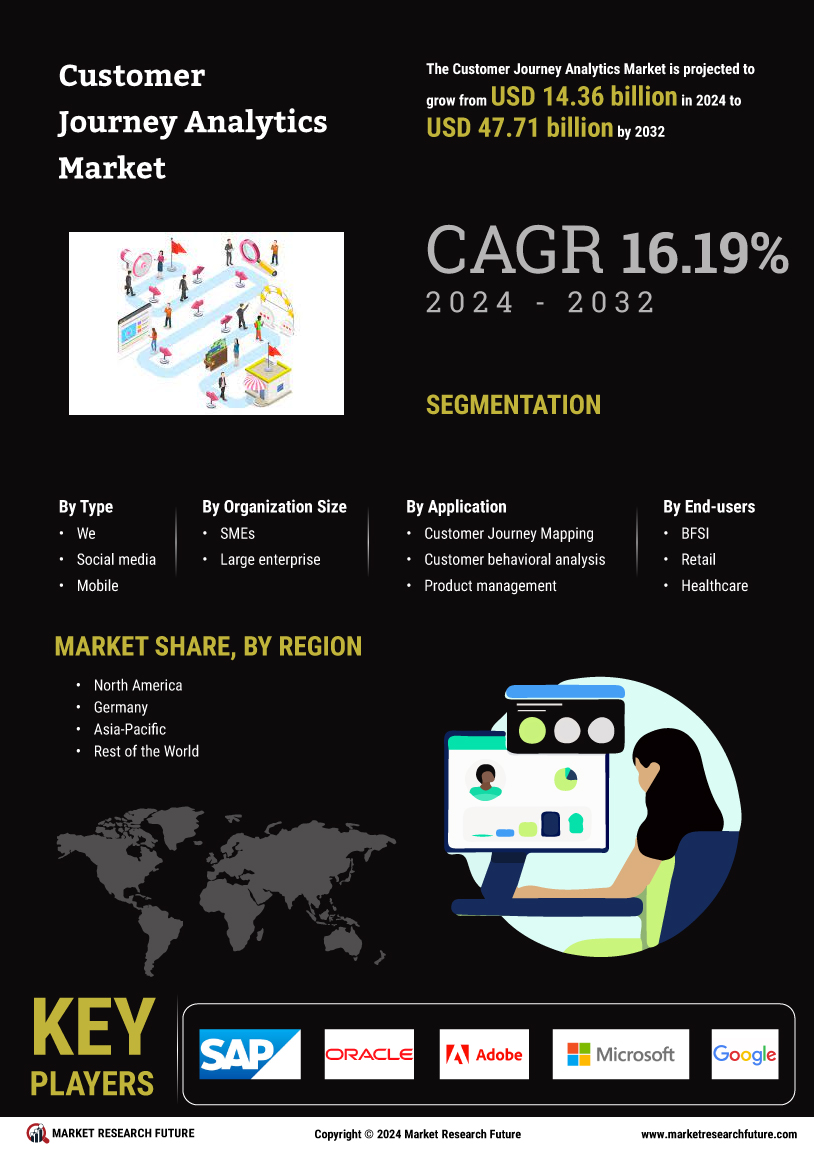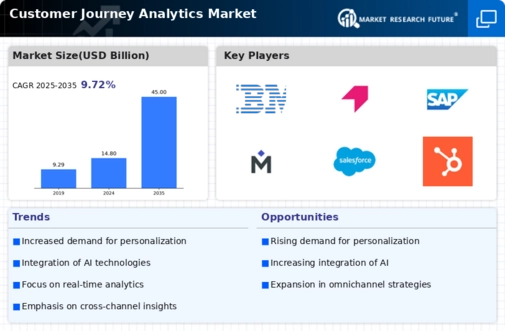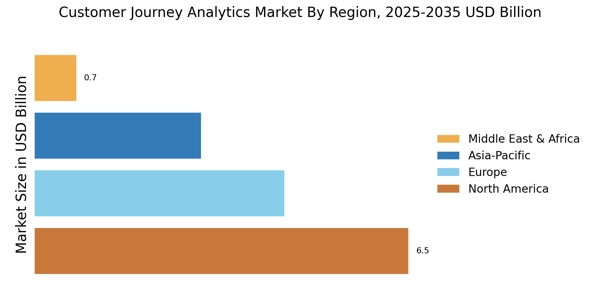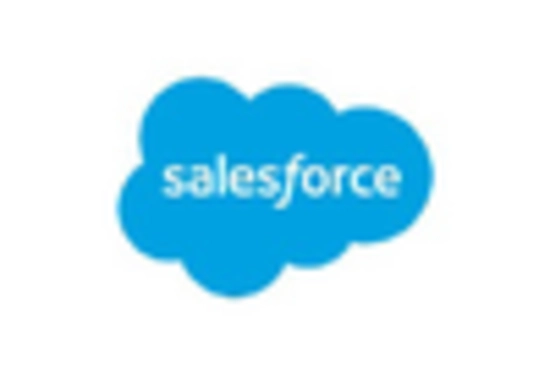Advancements in Technology
Technological advancements are significantly influencing the Customer Journey Analytics Market. The proliferation of big data, artificial intelligence, and machine learning has enabled businesses to gather and analyze vast amounts of customer data more efficiently. These technologies facilitate real-time insights into customer behavior, allowing organizations to adapt their strategies promptly. For instance, the integration of AI-driven analytics tools can enhance predictive capabilities, enabling businesses to anticipate customer needs and preferences. As technology continues to evolve, the demand for innovative analytics solutions that can provide deeper insights into customer journeys is expected to rise, thereby driving growth in the Customer Journey Analytics Market.
Rising Demand for Personalization
The increasing expectation for personalized customer experiences is a primary driver in the Customer Journey Analytics Market. Businesses are recognizing that tailored interactions can significantly enhance customer satisfaction and loyalty. According to recent data, 80% of consumers are more likely to make a purchase when brands offer personalized experiences. This trend compels organizations to invest in customer journey analytics to better understand individual preferences and behaviors. By leveraging data analytics, companies can create targeted marketing strategies that resonate with their audience, thereby improving conversion rates. As personalization becomes a standard expectation, the demand for sophisticated analytics tools that can track and analyze customer journeys is likely to grow, further propelling the Customer Journey Analytics Market.
Increased Focus on Customer Retention
Customer retention has emerged as a critical focus for businesses, driving growth in the Customer Journey Analytics Market. Retaining existing customers is often more cost-effective than acquiring new ones, prompting organizations to invest in analytics that provide insights into customer behavior and preferences. Research indicates that increasing customer retention rates by just 5% can lead to a profit increase of 25 to 95%. This realization has led companies to adopt customer journey analytics to identify pain points and enhance the overall customer experience. By understanding the customer journey, businesses can implement strategies that foster loyalty and reduce churn, thereby solidifying their position in the competitive landscape of the Customer Journey Analytics Market.
Regulatory Compliance and Data Privacy
Regulatory compliance and data privacy concerns are becoming increasingly prominent in the Customer Journey Analytics Market. As data protection regulations tighten, businesses must ensure that their analytics practices comply with legal standards while still delivering valuable insights. The implementation of regulations such as the General Data Protection Regulation (GDPR) has heightened awareness around data privacy, compelling organizations to adopt transparent data practices. This shift creates a demand for customer journey analytics solutions that not only provide insights but also adhere to compliance requirements. Companies that prioritize data privacy in their analytics strategies are likely to gain consumer trust, which is essential for long-term success in the Customer Journey Analytics Market.
Growing Importance of Omnichannel Strategies
The shift towards omnichannel strategies is a significant driver in the Customer Journey Analytics Market. Customers now interact with brands across multiple channels, including online, mobile, and in-store. This complexity necessitates a comprehensive understanding of the customer journey to ensure a seamless experience. Companies are increasingly adopting analytics tools that can track customer interactions across various touchpoints, providing a holistic view of the customer journey. Research shows that businesses with strong omnichannel strategies retain an average of 89% of their customers, compared to 33% for those with weak strategies. This statistic underscores the importance of investing in customer journey analytics to optimize omnichannel experiences, thereby enhancing customer satisfaction and loyalty in the Customer Journey Analytics Market.


















Leave a Comment